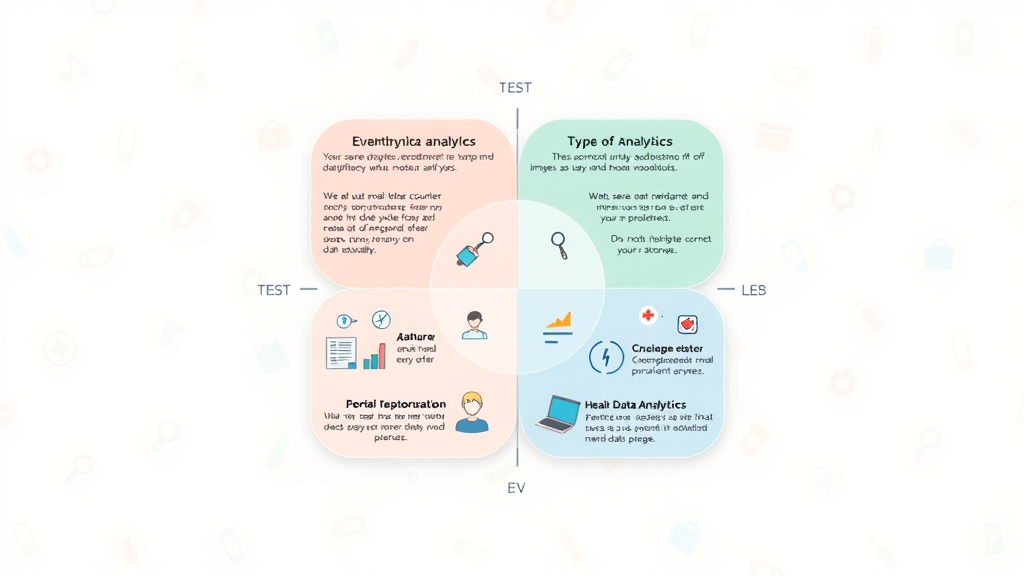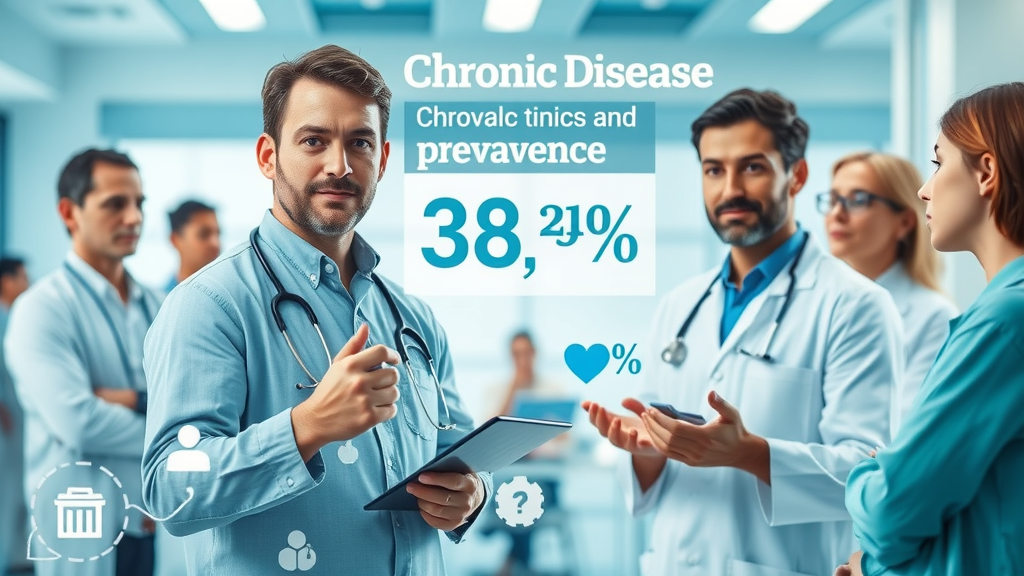Did you know that over 80% of health data in clinical settings remains untapped? Health data analytics has the power to uncover these hidden insights, helping care organizations revolutionize patient care , optimize operational efficiency , and drive superior patient outcomes . Whether you’re a healthcare executive, a data analyst , or a front-line care professional , understanding how to leverage care data analytics is essential to staying ahead in the rapidly evolving world of healthcare.
Unveiling the Power of Health Data Analytics: Surprising Facts for Modern Care

- Over 80% of health data remains unused in clinical decision-making. Learn how health data analytics can revolutionize patient care, elevate operational efficiency, and drive better outcomes through actionable insights.
Modern healthcare generates massive amounts of data from electronic health records, patient monitoring devices, lab systems, and more. Yet, most of this data remains underutilized. Health data analytics bridges this gap by transforming raw care data into meaningful insights. With robust data analytics tools, care organizations can gain a panoramic view of trends, isolate root causes of issues, predict future events, and receive clear guidance on which actions to take. These capabilities improve care delivery and ensure resources are directed with precision—benefitting both healthcare providers and patients alike.
Every day, hospitals, clinics, and public health agencies turn to analytics in health to spot subtle patterns, respond to emerging threats, and comply with tightening regulatory demands. When your organization leverages big data and advanced analytics, you unlock opportunities to enhance patient safety, cut costs, and strengthen the patient experience.
How Health Data Analytics Elevates Care Data and Patient Outcomes
Leveraging health data analytics revolutionizes care data management, fundamentally reshaping how healthcare professionals interact with data to drive improve patient outcomes . By integrating analytics into daily workflows, care organizations move from reactive to proactive patient care—anticipating issues before they escalate. Analytics tools rapidly process large volumes of healthcare data , converting them into actionable insights used to develop evidence-based strategies for disease management, resource allocation, and patient engagement.
For example, data analytics can highlight gaps in care delivery or signal when a patient is at risk for complications, enabling timely interventions. By making sense of complex care system data, organizations can tailor their approaches to each patient, creating a truly personalized care experience. Additionally, data-driven decisions help optimize staffing, reduce unnecessary testing, and improve overall service quality across clinical departments.
Real-Time Patient Monitoring and Predictive Analytics in Patient Care

Real-time patient monitoring empowered by predictive analytics is revolutionizing the way healthcare providers approach critical care and prevention. By streaming live healthcare data from bedside monitors, wearables, and electronic health records, clinicians can quickly detect physiological changes that signal deterioration or complications. Predictive models crunch these data points to forecast the probability of adverse events, such as sepsis or cardiac arrhythmias.
This enables proactive care, allowing for fast intervention and potentially saving lives. For example, integrated care data analytics platforms can alert clinicians when patients meet certain risk criteria, automating triage and escalation protocols. The real advantage is the ability to move from reacting to medical crises to actively preventing them, thus fundamentally improving patient care and outcomes.
Transforming Care Organization Efficiency with Data Analytics
Care organizations rely on data analytics to enhance operational efficiency at every level. Powerful dashboards and reporting tools allow administrators to visualize resource use, track key performance indicators, and streamline administrative workflows. Through precise data analysis , facilities can identify bottlenecks, reduce appointment scheduling delays, and minimize wasted resources such as excess medication or duplicate lab tests.
Operational insights drawn from healthcare data lead to smarter staffing models, improved surgical suite utilization, and optimized patient flow. In turn, these efficiencies translate directly into cost savings for the care system , as well as greater satisfaction for both providers and patients. As the data-driven mindset becomes integral to operations, care organizations become more responsive, flexible, and equipped to deliver consistently high-quality results.
Driving Value-Based Care Delivery Using Care Analytics
With healthcare shifting toward value-based care delivery , care analytics has become indispensable for proving clinical value and tracking patient outcomes. Analytics platforms aggregate electronic health records , claims data, and quality metrics, giving care providers a comprehensive picture of performance across populations. This evidence enables organizations to demonstrate improvements in key metrics such as readmission rates, preventable complications, and patient satisfaction scores.
Through proactive identification of high-risk patients and optimization of treatment pathways, care analytics empowers healthcare teams to deliver better results at a lower cost. Healthcare data analytics also supports the implementation of pay-for-performance programs, population health management, and comprehensive care coordination—all critical for excelling under modern reimbursement frameworks.
- Improved diagnostics
- Optimized treatment plans
- Better resource allocation
- Enhanced patient engagement
Data Analyst Expertise in Healthcare Data

Role of a Health Data Analyst in Contemporary Healthcare
The modern health data analyst is a linchpin in the digital transformation of healthcare systems. These professionals bridge the gap between raw healthcare data and actionable insights, extracting trends, patterns, and predictive indicators to empower clinical and operational decisions. Health data analysts collect, process, and interpret care data from diverse sources—including EHRs, lab reports, financial platforms, and public health datasets—to improve care delivery and support evidence-based medicine.
Acting as translators between information technology, clinical teams, and executive leadership, data analysts are key to ensuring that data projects meet both technical standards and practical healthcare needs. Skilled analysts provide timely analytics that facilitate everything from optimizing supply chains to supporting research on chronic diseases and guiding health informatics projects.
Key Skills and Qualifications Essential for Data Analysts in Health Data
Becoming a successful data analyst in healthcare requires a unique blend of technical acumen, subject matter expertise, and communication skills. Key competencies include statistical programming, data visualization, and a working knowledge of database management systems. Familiarity with regulatory frameworks, such as HIPAA, and the ability to understand medical terminologies and processes, is vital for ensuring that care data analytics projects are both compliant and relevant.
In addition to strong analytical thinking and problem-solving, effective data analysts possess high attention to detail, the capacity to explain findings to non-technical stakeholders, and a commitment to ethical standards for handling sensitive health information. Formal education may range from bachelor’s degrees in data science, health informatics, or related fields to advanced certifications tailored to healthcare analytics.
Building a Career in Care Data Analytics
The demand for skilled professionals in care data analytics is soaring. Hospitals, insurance companies, government bodies, and tech firms all seek individuals who can harness the power of healthcare data for better patient outcomes, innovation, and cost control. In addition to strong technical and healthcare backgrounds, successful candidates often have certifications in big data platforms or health informatics.
As digital transformation accelerates, career pathways expand beyond traditional data analysis roles. Opportunities abound as consultants, clinical analysts, population health managers, and data science researchers. Those pursuing this field enjoy strong compensation, high job security, and the reward of making a difference in patient care on a broad scale.
“Harnessing the full potential of health data analytics unlocks the future of precision medicine and patient-centered care.”
Critical Applications of Health Data Analytics in Healthcare Data

Population Health Management through Big Data and Healthcare Data
Big data analytics enables population health management by aggregating and analyzing vast datasets from patient registries, social determinants, and clinical outcomes. This holistic approach allows healthcare providers and public health agencies to identify at-risk groups, monitor disease trends, and implement targeted interventions at scale. By mapping patterns across entire populations, care organizations can proactively address public health challenges—such as chronic illnesses or outbreaks—while reducing disparities in access and outcomes.
These data-driven insights also inform strategic planning, resource allocation, and prevention efforts—improving health outcomes and optimizing system performance. Data analytics provides leaders with timely evidence to tailor outreach programs, vaccination campaigns, and screening initiatives.
Enhancing Clinical Decision Support with Data Analytics
Clinical decision support (CDS) harnesses health data analytics to help clinicians make more informed choices at the point of care. Advanced CDS tools integrate with electronic health records to offer personalized recommendations, alert about allergies or drug interactions, and highlight relevant research or protocols based on individual patient profiles. These real-time insights elevate patient care by reducing errors, standardizing practices, and promoting evidence-based medicine across the healthcare spectrum.
Care providers benefit from instant access to comprehensive, contextually relevant information, empowering them to deliver safer and more consistent care.
Leveraging Care Data Analytics for Chronic Disease Management
Care data analytics equips providers with the ability to track and manage complex chronic conditions by visualizing disease trajectories, assessing treatment efficacy, and predicting disease progression. Through continuous monitoring and predictive modeling, healthcare organizations can personalize interventions, streamline follow-up, and preempt costly hospitalizations. Analytics-driven programs foster more meaningful patient engagement, while outcomes measurement supports iterative improvement of care pathways and resources.
For the growing number of patients with multiple long-term conditions, analytics-driven chronic disease management is crucial for maintaining independence and improving quality of life.
- Disease Surveillance
- Personalized Medicine
- Hospital Readmission Reduction
Understanding the Role of Care Analytics in Health Informatics
Integrating Health Informatics and Data Analytics for Improved Patient Outcomes

Health informatics and data analytics are tightly linked, serving as the digital backbone for modern healthcare improvement. Health informatics involves the design, development, and application of technology for managing health information and care delivery systems. By embedding robust analytics into informatics infrastructure, organizations can make sense of the enormous volumes of structured and unstructured data generated every day.
This integration enhances real-time decision-making, streamlines data sharing across the continuum of care, and ensures that data collected at every step—from clinic intake to remote monitoring—contribute to a more holistic view of the patient. Ultimately, this synergy translates to improved patient outcomes, as clinicians and executives can act on the most accurate and timely information available.
Overcoming Healthcare Data Challenges with Modern Solutions
Healthcare is notorious for high data complexity, ranging from diverse data formats and legacy systems to data privacy regulations and interoperability gaps. Modern care analytics addresses these challenges through advanced tools and standards, such as secure data lakes, fast data extraction, and machine learning-driven harmonization of records across platforms. These innovations streamline access, reduce duplication, and provide a single reliable source of truth for all stakeholders.
Success in care data analytics now relies on rigorous attention to privacy , security, and regulatory compliance. Greater interoperability and user-friendly analytics solutions allow care organizations to implement comprehensive data strategies—supporting everyone from patient-facing staff to executive leaders seeking to optimize care.
| Data Analytics Application | Benefit |
|---|---|
| Real-time Monitoring | Early detection of health issues |
| Predictive Modeling | Reduced hospital readmissions |
| Population Health Management | Improved public health interventions |
| Workflow Optimization | Cost savings and increased efficiency |
The Four Types of Data Analytics in Healthcare Data

Descriptive, Diagnostic, Predictive, and Prescriptive Analytics Explained
Understanding the four core types of health data analytics is vital for leveraging data’s full potential in healthcare.
Descriptive analytics focuses on what has happened, summarizing historical care data to reveal patterns and trends. Diagnostic analytics explores why things happened by examining root causes, such as correlating interventions with patient outcomes. Predictive analytics seeks to forecast future events, using statistical models and machine learning to identify which patients are at risk of readmission or disease. Prescriptive analytics builds on these insights, prescribing specific actions that organizations or clinicians can take to improve patient care or operational performance.
“Each stage of data analytics in care delivery brings unique insight – from understanding what happened, to why, to what might occur, and what to do next.”
- Descriptive Analytics: What has happened?
- Diagnostic Analytics: Why did it happen?
- Predictive Analytics: What could happen?
- Prescriptive Analytics: What action should be taken?
Privacy, Security, and Compliance in Health Data Analytics

Ensuring Data Privacy in Care Data Analytics
Protecting the privacy of patient health information is paramount in healthcare data analytics. As care organizations harness big data and advanced analytics, they must implement stringent measures to safeguard sensitive care data . This includes encryption, role-based access controls, secure data transmission protocols, and rigorous employee training on data handling best practices.
Patients trust that their private health record data will be used ethically and responsibly. Breaches can have catastrophic consequences—including lost trust and regulatory penalties. Robust privacy frameworks are crucial for encouraging the responsible and secure use of analytics in health.
Healthcare Data Regulatory Standards: HIPAA, GDPR, and Beyond
Compliance with healthcare regulations such as HIPAA (in the US), GDPR (in the EU), and local data protection laws is non-negotiable for all entities engaging in health data analytics . These regulations define strict requirements for the collection, storage, sharing, and use of health information. Organizations must implement processes to de-identify data, conduct risk assessments, and demonstrate ongoing compliance through audits and documentation.
Modern analytics solutions often include built-in compliance tools, allowing care organizations to monitor access, flag potential violations, and maintain an audit trail of all data activities. Adhering to these standards not only protects against fines but also assures patients and stakeholders of ethical, lawful behavior throughout the analytics lifecycle.
Patient Trust and Ethical Considerations in Analytics in Health
Ethics and patient trust are at the foundation of analytics in health . Transparency, accountability, and fairness should guide the deployment of data analytics solutions. Care providers must educate patients on how their data will be used, offer clear consent options, and guarantee rights to transparency and correction. Bias detection and algorithm validation are vital to ensuring fair, non-discriminatory analytics in care delivery and health outcomes.
Organizations that build privacy and ethics into their analytics strategy earn long-lasting loyalty and public trust—key drivers for value-based care and sustainable patient engagement.
Leveraging Big Data with Care Data Analytics for Improved Patient Outcomes
Utilizing Artificial Intelligence and Machine Learning in Healthcare Data

The integration of artificial intelligence (AI) and machine learning with care data analytics unlocks unprecedented opportunities for healthcare innovation. AI algorithms process terabytes of clinical and operational data in seconds, revealing complex relationships among symptoms, treatment regimens, and outcomes. This enables real-time clinical decision support, automated diagnostics, and tailored risk predictions.
Machine learning models continuously improve as they absorb new data, enhancing their predictive accuracy for emerging health threats and rare conditions. AI-powered analytics also streamline administrative processes, such as claims review and patient scheduling by identifying efficiencies, minimizing errors, and reducing burdens on busy staff.
Driving Innovations in Patient Care and Workflow Efficiency
AI and analytics drive continuous improvement in both patient care quality and back-office workflow efficiency. Digital assistants and clinical bots automate routine tasks, freeing providers to focus on direct patient interaction. Analytics dashboards offer an end-to-end view of patient journeys, helping multidisciplinary teams coordinate seamlessly and deliver holistic care.
With AI-based insights, health systems are identifying ideal moments for intervention, prioritizing high-impact cases, and personalizing therapies—all while keeping costs under control. This results in efficient, value-driven care delivery that aligns with the goals of modern healthcare reforms.
Future Trends in Big Data and Care Analytics
The future of big data and care analytics points toward seamless interoperability, automated analytics pipelines, and more sophisticated AI-driven personalization. As data ecosystems mature, predictive and prescriptive analytics will become more deeply embedded in every aspect of healthcare operations. Patient-generated data from wearable tech and home monitoring devices will fuel richer insights, supporting preventive care and lifelong wellness.
Expect ongoing advances in natural language processing, bioinformatics, and blockchain-based data management, all contributing to secure, ethical, and highly effective care models. Tomorrow’s care organizations will differentiate themselves by how well they harness analytics to innovate, adapt, and consistently improve patient outcomes .
Implementing Health Data Analytics Solutions: Best Practices for Care Organizations
Choosing the Right Health Data Analytics Tools for Your Organization

Choosing the most appropriate health data analytics tools is a crucial step toward transforming your care organization . Key considerations include system compatibility, ease of integration with existing electronic health records, data security features, scalability, and user experience. Leading analytics platforms provide customizable dashboards, robust reporting, and AI-driven insight generation—ensuring both clinical and non-clinical staff can easily access and interpret the data they need.
Collaboration with vendors who specialize in healthcare-specific analytics guarantees adherence to compliance requirements and boosts confidence in solution longevity. Pilot programs, stakeholder feedback, and ongoing training will further maximize successful adoption and return on investment.
Building a Data-Driven Culture for Sustainable Patient Care Improvements
Implementing analytics tools is only the start; cultivating a data-driven culture is essential for sustained transformation. Organizations should set clear objectives, invest in infrastructure, provide staff education, and nurture a collaborative environment that values sharing insights. Interdepartmental collaboration is vital: when medical, operational, and data science teams work together, the result is more powerful, actionable analytics.
Regularly revisiting goals and progress, rewarding data-informed decisions, and promoting the value of analytics among all staff drive continuous improvement and long-term competitive advantage.
- Set clear analytics goals
- Invest in robust data infrastructure
- Train staff in health data analytics
- Foster interdepartmental collaboration
How to Become a Health Data Analyst: Career Pathways and Certification
Educational Pathways and Skills Needed for Data Analyst Roles
Those aspiring to build a career as a health data analyst should begin with a foundation in data science, statistics, computer science, or health informatics. Practical experience through internships, healthcare IT roles, or research projects helps develop the technical and industry-specific skills required. On top of technical programming and database management, aspiring analysts should become familiar with medical vocabulary, electronic health record systems, and regulatory compliance (such as HIPAA training).
Communication is essential, as analysts often present findings to clinical and administrative stakeholders. Lifelong learning, adaptability, and ethical rigor are prized traits in this fast-evolving discipline.
Certifications and Continuing Education in Health Data Analytics
Professional certifications boost employment prospects and demonstrate expertise in the field. Entry-level analysts may pursue general data analytics credentials, while advanced certifications focus on healthcare contexts. Leading certifications include those offered by AHIMA, INFORMS, and reputable online platforms specializing in healthcare analytics. Continuing education is critical, as healthcare data standards, analytical techniques, and regulatory expectations routinely evolve.
| Certification | Institution | Focus Area |
|---|---|---|
| Certified Health Data Analyst | AHIMA | Data Management |
| Certified Analytics Professional | INFORMS | Applied Analytics |
| Healthcare Analytics Certification | Coursera/EdX | Healthcare-specific Analytics |
Frequently Asked Questions: Health Data Analytics
What is healthcare data analytics?
Healthcare data analytics is the systematic analysis of health data to gain insights for better patient care, operational efficiency, and healthcare outcomes.
What are the 4 types of data analytics in healthcare?
The four types of data analytics are descriptive (identifying trends), diagnostic (determining causes of outcomes), predictive (forecasting future events), and prescriptive (recommending actions).
Is healthcare data analytics a good career?
Yes, healthcare data analytics careers offer strong job growth, high compensation, and the opportunity to impact patient outcomes and organizational performance.
How much do healthcare data analysts make?
Healthcare data analysts typically earn from $60,000 to over $100,000 annually, depending on experience, education, and location.
Key Takeaways: Harnessing Health Data Analytics for Superior Patient Care
- Data-driven care is revolutionizing healthcare delivery
- Investing in analytics leads to improved outcomes
- Ethical and secure use of data builds patient trust
- Health data analytics careers are future-proof and in demand
Unlock the Full Potential of Health Data Analytics for Your Care Organization Now
Transform the way you deliver care with advanced health data analytics solutions. Sign up today or request a demo to discover how actionable data can empower your team and drive excellence in patient outcomes.
 Add Row
Add Row  Add
Add 



Write A Comment